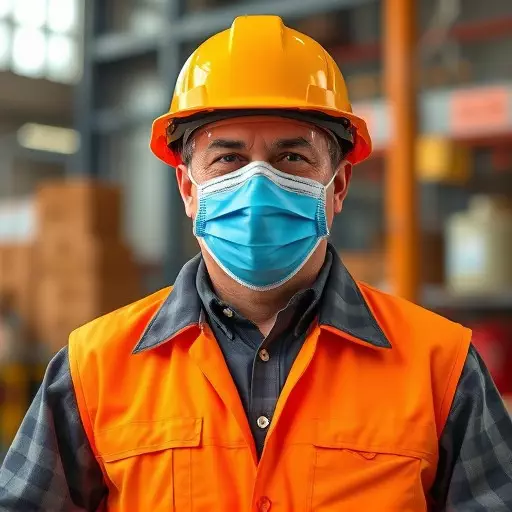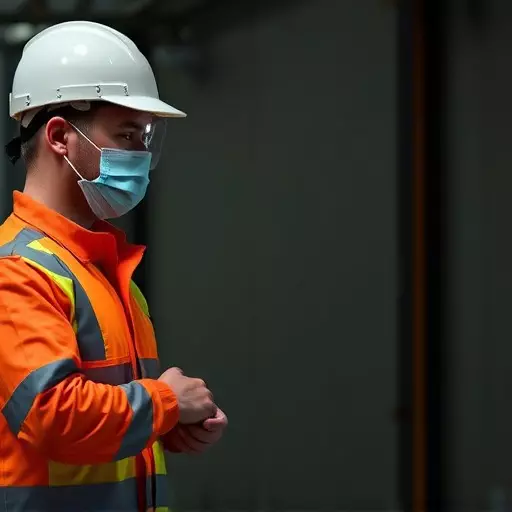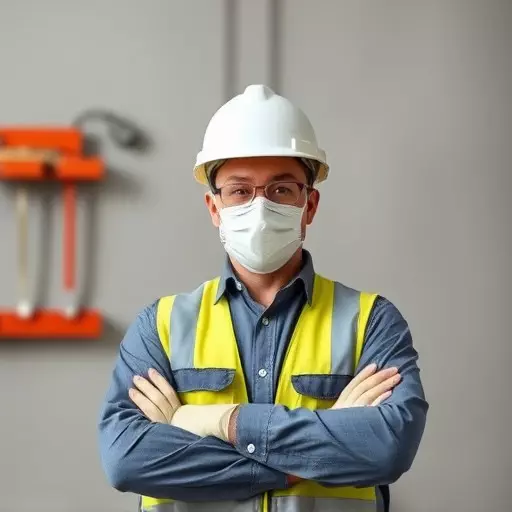Occupational safety initiatives, including rigorous risk assessments, emergency protocols, and personal protective equipment (PPE) best practices, create supportive and secure environments in mental health facilities. These strategies promote stability and protect against overwhelming sensory inputs or triggering environments. In modern work environments, prioritizing employee mental health alongside robust occupational safety practices is crucial. Mental health professionals rely on PPE for protection but its effectiveness depends on specific best practices, comfort, proper training, and understanding when to use different types. Effective safety compliance strategies, based on lessons learned and industry best practices, integrate comprehensive approaches tailored to job roles. This leads to a culture of proactive safety management, enhancing productivity and job satisfaction.
In today’s fast-paced world, mental health safety initiatives are no longer an optional consideration but a crucial aspect of overall well-being. This comprehensive guide explores various facets of mental health safety, drawing insights from occupational safety lessons learned to implement best practices in mental health environments. We delve into safety compliance strategies, the role of Personal Protective Equipment (PPE), and fostering safe spaces for effective support systems. By integrating these practices, we can revolutionize mental healthcare, ensuring professionals and employees alike thrive in a supportive environment.
- Understanding Mental Health Safety: A Crucial Aspect of Overall Well-being
- Occupational Safety Lessons Learned: Applying Best Practices to Mental Health Environments
- Safety Compliance Strategies: Ensuring Employee Mental Health Protection
- Personal Protective Equipment (PPE) for Mental Health Professionals: Best Practices and Limitations
- Fostering a Safe Space: Creating Comprehensive Mental Health Support Systems
Understanding Mental Health Safety: A Crucial Aspect of Overall Well-being

Mental health safety is a fundamental aspect of overall well-being that often receives less attention than physical health and occupational safety. It involves creating an environment where individuals feel secure to express their emotions, seek support when needed, and engage in activities that promote mental resilience. By integrating mental health safety initiatives into workplace cultures and community programs, we can significantly reduce stigma, improve coping mechanisms, and enhance overall productivity and quality of life.
Just as occupational safety lessons learned and compliance strategies are vital for minimizing physical risks at work, personal protective equipment (PPE) best practices extend beyond physical barriers. PPE in this context refers to tools and support systems that safeguard mental health, such as accessible counseling services, peer support networks, and inclusive policies that encourage open dialogue about mental health challenges. Incorporating these strategies not only fosters a healthier, happier workforce but also contributes to a more robust and resilient society overall.
Occupational Safety Lessons Learned: Applying Best Practices to Mental Health Environments

Occupational safety and health initiatives have much to offer when it comes to enhancing mental health environments. By applying lessons learned from traditional occupational safety, we can create more supportive and secure spaces for individuals grappling with mental health challenges. Safety compliance strategies, such as rigorous risk assessments and well-defined emergency protocols, are essential in fostering a sense of stability and predictability. Personal protective equipment (PPE) best practices, though often associated with physical hazards, can also metaphorically shield individuals from overwhelming sensory inputs or triggering environments.
Adapting these concepts ensures that mental health facilities and support spaces prioritize proactive measures, rather than solely reactive ones. Incorporating safety features into the design and management of these spaces encourages a culture of care and vigilance, ultimately contributing to improved outcomes for those seeking support for their mental well-being.
Safety Compliance Strategies: Ensuring Employee Mental Health Protection

In today’s fast-paced work environments, prioritizing employee mental health is as crucial as ever. Safety compliance strategies play a pivotal role in ensuring workers’ well-being and fostering a supportive workplace culture. Organizations should go beyond basic regulations and integrate comprehensive approaches that address the unique challenges of each job role. By drawing upon lessons learned from past incidents and industry best practices, businesses can implement effective safety measures tailored to their operations.
One key component is adopting personal protective equipment (PPE) that extends beyond physical safeguards. Mental health PPE best practices involve providing resources for stress management, emotional support, and open communication channels. This could include offering counseling services, mental health awareness training, and flexible work arrangements. By integrating these strategies into daily operations, companies can create a safer, more supportive environment where employees feel empowered to speak up about their struggles, enhancing overall productivity and job satisfaction.
Personal Protective Equipment (PPE) for Mental Health Professionals: Best Practices and Limitations

Mental Health professionals often find themselves on the frontlines, providing essential support in high-stress environments. Personal Protective Equipment (PPE), a crucial component of occupational safety lessons learned, plays a significant role in protecting these workers from potential risks and hazards associated with their work. However, it’s important to note that PPE for mental health professionals comes with its set of best practices and limitations.
While wearing PPE can shield healthcare workers from physical and airborne contaminants, it also demands careful consideration regarding comfort and feasibility in a mental health setting. For instance, ensuring adequate ventilation and minimizing heat stress is essential during prolonged use. Moreover, the effectiveness of PPE relies on proper training and adherence to safety compliance strategies. Professionals must be educated on donning and doffing procedures, understanding different types of PPE, and recognizing situations where their use is most beneficial.
Fostering a Safe Space: Creating Comprehensive Mental Health Support Systems



